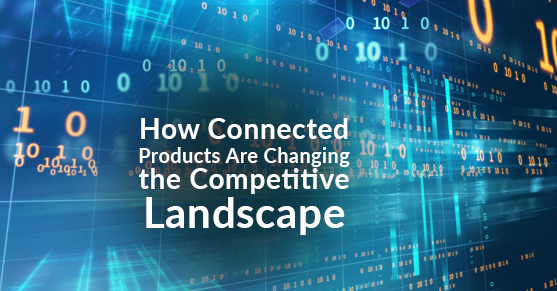When I was thirteen years old, I got a wrist radio for Christmas. It was probably the size of a coaster, and it had a strap on it for your wrist so you could listen to the radio. I just thought this was IT – the best thing EVER! And now refrigerators can place your milk order, your doorbell can talk to people, videos can guard your property from your iPad, athletic clothing can monitor your body’s vital signs, and you can turn on your coffeemaker from your phone… it’s the stuff of sci-fi back in the day. In fact, I used to be a Trekkie too, admiring their communicators, scanners, and replicators. Now, this technology is not only here but it’s commonly used. It’s a case of being back to the future, as it were…
Comparing where things used to be to where they are today – they’re changing in leaps of technology. And that is changing the competitive landscape for businesses today.
A LOT of Data Now
The Internet of Things (IoT), wearable technology, Augmented Reality (AR) and Virtual Reality (VR) are all game-changing technologies. Connected products are changing how we relate to and with each other, especially as a result of recent events in 2020. You may not think about it but there is more data than ever on just about anything imaginable.
In terms of business, there are nearly 8,000 potential martech applications available to support delivering value to customers – and that doesn’t consider any infrastructure or proprietary software. Responsible enterprise needs data to “talk” from one app to the next, so they need to be integrated into the IT environment or use APIs to facilitate and unify data exchange.
Beyond that, where does all this data get stored in a secure way? We have data catalogs, data warehouses, data lakes… and we have cloud technology too, with on-premise, public, and hybrid solutions.
What happens when these connected products go down? When Facebook and Instagram went down recently, people, communities, and companies came to a standstill. Even more, what happens when non-tech companies are buying tech companies to get in the game? And the big question – what happens when artificial intelligence can’t read your face when you want to buy a burger?
Competition Can Win Through Technology
In terms of technology companies that have an established product and market share, when competitors move in with new related technology, it means potentially losing market share. Why let someone else serve their customers when they can simply build an add-on to their existing technology?
Some might call it opportunistic (like search engine company Google building driverless cars), others might say it’s Franken-tech (like folding phones), while others deem it futuristic (like Apple’s new Macbook using only dongles to connect). But the reality is many companies are opting to ‘bolt-on’ new products to their existing product infrastructure so their offering is more comprehensive and attractive for the solutions their existing customers would otherwise look for elsewhere.
A quick sidebar: despite all the fancy stuff technology can bring, we can’t lose sight of making sure the basics are covered. Make sure your data is clean, your security protocols are tight, your IT infrastructure is stable… you know the drill.
What’s the downside of having more robust, streamlined technology ecosystems? Monopolies could form (not that we don’t already see that). Companies could get locked into working with just one provider. Customers will tolerate sub-par solutions simply to stay within the ecosphere of their chosen provider, amongst other things.
What’s the upside of connected products in terms of competition? It keeps us all sharper, seeking and innovating and honing superior solutions. Technologists need to keep an eye on the horizon to see emerging trends and possibilities, then twist and apply them to their industry. In other words, do what makes the economy work – deliver ever-increasing value with efficiency, can-do attitude and courage in pushing the envelope.
Connected devices literally mean we’re all in this together, despite a little healthy competition. As both a consumer and a leader of a technology company, I welcome that kind of connection.
This post was originally published here.

